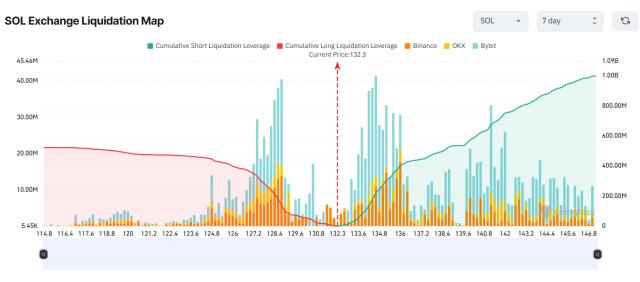Author: Bryan Daugherty
Compiled by: Block unicorn
Altcoin season may be fundamentally changed by the emergence of Bitcoin exchange-traded funds (ETFs).For years, the crypto market has followed a familiar rhythm, with capital rotating in a near-predictable pattern. Bitcoin surges, attracting mainstream attention and liquidity, followed by a flow of funds into Altcoins. Speculative capital pours into low-cap assets, driving up their value, and traders excitedly refer to this as "Altcoin season".
However, this once-assumed cycle is showing signs of structural collapse.
Spot Bitcoin ETFs broke records in 2024, attracting $129 billion in inflows. This provided retail and institutional investors with unprecedented access to Bitcoin investment, but also created a vacuum, siphoning funds away from speculative assets. Institutional investors now have a safe, regulated way to gain exposure to cryptocurrencies without the "Wild West" risks of the Altcoin market. Many retail investors also find ETFs more appealing than searching for the next 100x token. Even the renowned Bitcoin analyst PlanB has swapped his actual Bitcoin holdings for a spot ETF.
This shift is happening in real-time, and if capital continues to be locked in structured products, Altcoins will face reduced market liquidity and correlation.

Is Altcoin season dead? The rise of structured crypto investing
Bitcoin ETFs provide an alternative to chasing high-risk, low-cap assets, offering investors leverage, liquidity, and regulatory transparency through structured products. Retail investors, once the primary drivers of Altcoin speculation, can now directly invest in Bitcoin and Ethereum ETFs, which eliminate self-custody concerns, reduce counterparty risk, and align with traditional investment frameworks.
Institutions have more incentive to avoid Altcoin risks. Hedge funds and professional trading platforms that once chased higher returns in the illiquid Altcoin space can now deploy leverage through derivatives or gain exposure via ETFs on the traditional finance track.
As the ability to hedge through options and futures increases, the motivation to speculate on low-liquidity, low-volume Altcoins is significantly diminished. This trend is further reinforced by the record $2.4 billion in outflows and ETF redemptions in February, forcing the crypto market into an unprecedented state of discipline.

The traditional "cycle" starts with Bitcoin and then enters Altcoin season. Source: Cointelegraph Research
Will venture capital abandon crypto startups?
Venture capital (VC) firms have historically been the lifeblood of Altcoin season, injecting liquidity into emerging projects and weaving grand narratives around new tokens.
However, as leverage becomes more readily available, capital efficiency is becoming a key priority, and VCs are reconsidering their strategies.
VCs strive to achieve the highest possible return on investment (ROI), typically in the range of 17% to 25%. In traditional finance, the risk-free rate of capital is the benchmark for all investments, often represented by the yield on US Treasuries.
In the crypto realm, Bitcoin's historical growth rate has served a similar role as the expected return benchmark. This has effectively become the industry's risk-free rate. Over the past decade, Bitcoin's compound annual growth rate (CAGR) has averaged 77%, significantly outpacing traditional assets like gold (8%) and the S&P 500 (11%). Even over the past five years, including both bull and bear market conditions, Bitcoin's CAGR has remained at 67%.
Benchmarked against this, venture capitalists deploying capital in Bitcoin or Bitcoin-related businesses can expect a total ROI of around 1,199% over a five-year period, meaning their investment would increase nearly 12-fold.
While Bitcoin remains volatile, its long-term outperformance has made it a fundamental benchmark for assessing risk-adjusted returns in the crypto space. With increased arbitrage opportunities and reduced risk, VCs may opt for safer bets.
In 2024, VC deal volume declined by 46%, although overall investment amounts rebounded in the fourth quarter. This signals a shift towards more selective, higher-value projects, rather than speculative capital.
Web3 and AI-driven crypto startups continue to attract attention, but the days of indiscriminate funding for every whitepaper token may be numbered. If venture capital further shifts towards structured investments through ETFs rather than direct investments in high-risk startups, new Altcoin projects may face severe consequences.
Meanwhile, the few Altcoin projects that enter the institutional spotlight (such as Aptos, which recently filed for an ETF) are the exceptions, not the norm. Even crypto index ETFs aiming to provide broader exposure struggle to attract meaningful inflows, highlighting the concentration of capital, rather than its dispersion.

The problem of oversupply and the new market realities
The market landscape has shifted. The sheer number of Altcoins competing for attention has created a saturation problem. According to Dune Analytics, there are currently over 40 million tokens in the market. In 2024, an average of 1.2 million new tokens were launched per month, and over 5 million have been created since the beginning of 2025.
With institutions leaning towards structured investments and a lack of retail-driven speculative demand, liquidity is no longer flowing into Altcoins as it once did.
This reveals a harsh reality: most Altcoins will not survive. CryptoQuant CEO Ki Young Ju recently warned that without a fundamental shift in market structure, the majority of these assets are unlikely to survive. "The era of everything going up is over," Ju said in a recent X post.
In an era where capital is locked in ETFs and perpetual contracts rather than freely flowing into speculative assets, the traditional strategy of waiting for Bitcoin's dominance to wane before shifting to Altcoins may no longer apply.
The crypto market has transformed. The easy, cyclical Altcoin rallies may be replaced by an ecosystem where capital flows are determined by capital efficiency, structured financial products, and regulatory transparency. ETFs are changing the way people invest in Bitcoin and fundamentally altering the distribution of liquidity across the entire market.
For those who have built their assumptions on the premise that Altcoin booms will follow each Bitcoin rally, now may be the time to reconsider. As the market matures, the rules may have changed.







